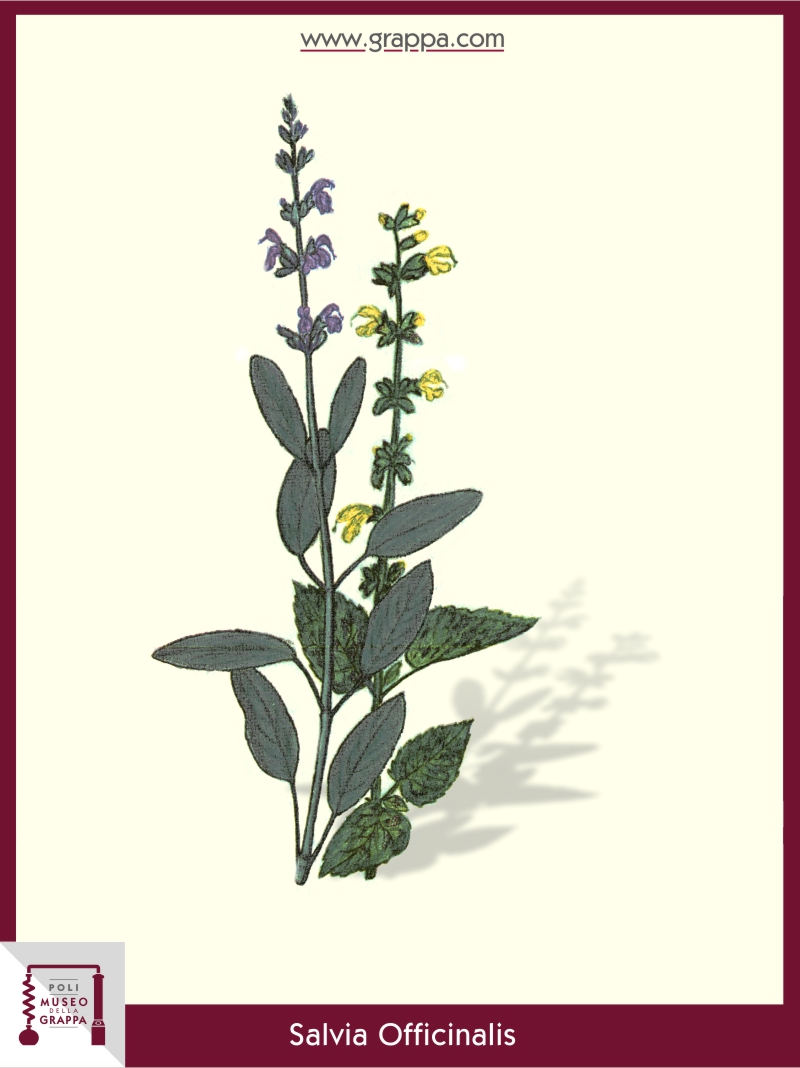The sage: from medicine to food
- Plant: Sage, Garden Sage (Salvia Officinalis)
- Plant part: flower
- Plant feauters: digestive, astringent, aromatic, anti-inflammatory, tonic, stomachic expectorant, expectorant, stimulating, relieving flatulence, antiseptic, stimulates blood flow, gall producer , balsamic, hypoglycaemic, eupeptic, cough-releasing, decongestant

-
Description:
"Salvia salvatrix naturae conciliatrix" was the miracle drug of the doctors of the school of Salerno because it soothes nerves, protects against poison, heals paralysis and guarantees a long and happy age to man.
For a long time the wonderful virtues of this plant medicine were praised so much that they developed into a profitable merchandise in the Dutch markets. Due to its very famous effects it was exchanged with Chinese tea from the eastern markets.
The revocation of all these sensational virtues occurred in the nineteenth century, when the sage was strictly limited to the kitchen.The Pharmacopoeia (Official Pharmacopoeia) stated: "It can only be used for flavoring food and birds!". Nevertheless the sage is still used as a valuable medicine according to the latest chemical and pharmaceutical tests.
The results identify the extract of sage as a bitter substance called Picrosalvina and confirm the effects of the plant, for example the stimulation and therefore the rasising of the amount of gastric juice which increases digestion. In addition, it is used as an antiperspirant and as an auxiliary medication for the treatment of influenza diseases due to its essential oils.Especially for the last application the sage is particularly suitable for a Grappa. A not only effective "medicine" but also pleasant in taste. We can offer you two "sage" varieties: Salvia offcinalis (common sage), cultivated in vegetable gardens and growing spontaneously in the Mediterranean and Salvia glutinosa (glutinous sage) that thrives spontaneously in and below the mountains.
-
Note:
Like all plants containing essential oils, it is contraindicated in pregnancy.
The recipe
-
Ingredients:
- 5 flowering tops of sage
- 1 liter of Grappa -
Preparation:
Five flowering tops soaked in a liter of Grappa standing in the sun for two months.
Filtered and aged the two Grappas will be characterized by a different taste.
The Grappa of the common sage has a green color and a particularly aromatic taste, while the Grappa of the glutinous sage will be green to yellow, but is very delicate in taste and aroma.
Poli Distillerie and
Poli Grappa Museum
Newsletter
Subscribe our newsletter to keep up to date with our latest news.